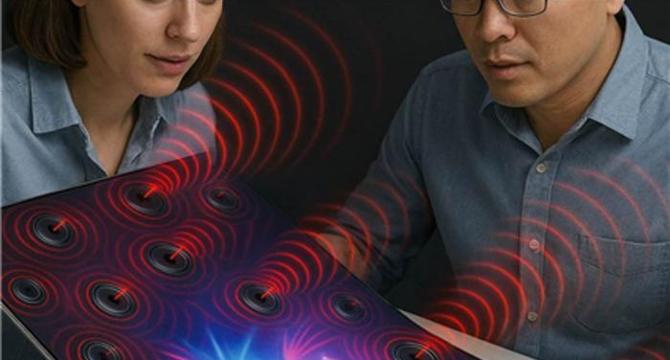Bioengineer
1d
80

Image Credit: Bioengineer
Advanced OLED Displays Now Support Integrated Thin and Multichannel Audio Systems
- Researchers at POSTECH have introduced Pixel-Based Local Sound OLED technology, turning each pixel into a sound emitter within the display, revolutionizing visual and auditory experiences.
- This innovation eliminates the need for external speakers by embedding piezoelectric exciters in the OLED panel for localized sound, preserving slim form factors.
- The technology synchronizes electrical driving signals with mechanical vibrations to produce sound waves directly from the screen, enhancing user immersion.
- POSTECH's design overcomes sound crosstalk issues by ensuring spatial isolation of audio signals from each pixel, improving sound localization accuracy.
- The prototype, demonstrated on a 13-inch OLED panel, proves the practical feasibility and scalability of the technology in commercial devices.
- Applications in automotive, VR, AR, and mobile devices offer enhanced sensory experiences and lighter form factors by eliminating conventional speaker systems.
- The technology involves embedding ultra-thin piezoelectric exciters delicately within the OLED frame to emit sound waves through mechanical vibrations.
- Signal processing and hardware design suppress acoustic crosstalk between pixels, preserving independent audio channels for complex soundscapes.
- Professor Su Seok Choi highlights the transformative potential of this technology in advancing sleek, lightweight designs with immersive audio in next-gen electronics.
- The innovation sets a benchmark for merging sight and sound in multimedia devices, with potential applications extending to healthcare, aviation, and smart environments.
Read Full Article
4 Likes
For uninterrupted reading, download the app